Airlines including Lufthansa, British Airways, Iberia and American have announced direct connect initiatives via NDC. They either introduced charges to book through a GDS or will be offering additional capabilities if booked directly through their NDC interface. When it comes to costs (or certain fares not being available in preferred channels) it affects everybody. It sounds so easy to use NDC, but the reality is: Not too many bookings are being made – especially for business travel. Why is that?
GDSs won’t just give up the battlefield of simple bookings (call it ‘easily earned money’) and only deal with the complicated PNRs. While I am critical of the global distribution system “oligopoly”, the sustainability of the redrawn commercial and technological landscape that NDC could produce has to be questioned. The proposition of NDC means that a “formerly relatively lean distribution chain will become a complicated commercial landscape with numerous airlines, numerous TMCs (or corporations) and several technology providers – all being connected to each other on a technological, as well as commercial, level.”
Some travel history
Let me start with taking a look at the history of travel: Airline inventory is held in the Central Reservation System – CRS (which is today part of the Passenger Service System – PSS) and in the old days was made available by the Global Distribution Systems (GDSs) to agents via cryptic screens. The traveler actually used to call a travel agent to make a reservation.
With the success of the internet, at the end of last century, Online Booking Tools (OBT) were introduced and along with that, since not every OBT provider wanted to integrate with each GDS separately, GDS aggregators including ourselves emerged. While GDSs “spoke” (and still “speak”) GDS specific language, GDS aggregators translate that into a unified XML which remains constant across GDSs.
What is NDC?
Now, what is NDC? NDC stands for New Distribution Capability. I was always told not to use “New” in any product name, because in a year from today or in 10 years, is it still considered “new”, but this is what IATA chose. NDC has two major aspects in my understanding. First, it is a new communication protocol that replaces a protocol which has been around since the 1980s (EDIFACT – Electronic Data Interchange for Administration, Commerce and Transport) with a new standard (XML – Extended Markup Language).
EDIFACT Message vs. XML document:
The first version of the IATA NDC schema was actually our XML schema which we created around the turn of the century. Developers today prefer JSON (JavaScript Object Notation) and rapid API development and run when they hear XML. Hence an argument can be made that this is not so “new” after all.
The other aspect of NDC is that airlines want to take control of the distribution, such as provide offers based on ‘who is asking’, price ancillaries etc. – in order to differentiate from each other. Example could be Michael Strauss, not a good client, let’s offer him no direct flights and only middle seats. Or, what Lufthansa actually wants to offer is Bavarian brewery tours for passengers with long stopovers in Munich. To achieve these wishes, airlines contracted with technology providers or started their own initiative to hook into CRSs and provide their own API (Application Programming Interface). This is now called NDC XML and at this time (Oct. 2017) there are approx. 18 versions around. As I mentioned, the 1st version was our XML schema, but it has changed a lot since then. Presently a new version comes out every six months.
If we look at the numbers, we have up to 500 airlines in various GDSs (there are actually 5,000 airlines worldwide and 30 currently considering NDC as an option) and one would have to develop and maintain a magnitude of various NDC versions with multiple airlines (up to 500). IATA (International Air Transport Association) promises to certify NDC connections, however, it remains to be seen how this will play out. As airlines want to use this vehicle to differentiate themselves and have no desire to be easily comparable with a competing carrier, I strongly believe each airline will have their own “interpretation” of NDC (even British Airways / Iberia decided to use a different approach than OneWorld alliance partner American; Lufthansa does not even use one of the published IATA NDC version but their own flavor of it). Security breaches are on the rise, and companies are trying to encapsulated their systems rather than opening them up. In this example, what used to be a closed environment of a few handful of CRS provider hooking into one handful of GDSs, who open themselves only to a limited number of authorized developers, now appear to open up APIs to everybody. This may be an ultimate risk that needs to be managed. GDSs also warn to be careful what you wish for: can airlines handle the traffic. In business travel, a look-to-book of 5:1 is maybe something everybody can handle, but are airlines prepared to handle traffic from numerous institutions worldwide, with numerous shopping request? Long story short, there is absolutely no way that every TMC or even every corporation can integrate with all airlines, which means we need a direct connect aggregator.
Will GDSs become the NDC aggregator?
Let’s take a step back: Ideally it would be the easiest if the GDSs would just unplug the EDIFACT pipeline and plug in the NDC pipeline. However, not all airlines will migrate to NDC at the same time which would mean a transition period and among the challenges, there is also the unresolved problem who does the ticketing: ATPCo airlines ticket in the GDS, while NDC API bookings are ticketed with the airline. And that’s besides commercial aspects. Consequently, this won’t happen overnight. Despite the fact that TMCs request GDSs to evolve, as usually all the TMC infrastructure is built on top of GDSs, this may only be a solution for the future and it is not something which is available today. Some TMCs see the effort to switch to NDC similar complicated as a switch of the PSS system of an airline.
Some airlines suggest to wait if the GDSs pick up the pace, but if a solution today is needed, we are stuck to the Direct Connect aggregators. Unfortunately, it doesn’t stop here: We also have Low Cost Carriers (LCCs) – and there is about 150 of them, and there already have emerged LCC aggregators for low cost carriers – which is a tough part as some of these LCCs can only be integrated via website screen scraping.
Aggregator of the aggregators
Now we have the GDS aggregators, the Direct Connect aggregators and the LCC aggregators (and this is just for air) which means we need the aggregator of the aggregators.
We also need a multi-source Agent Desktop now, because not all bookings can be serviced by GDS cryptic screens anymore. In addition, we cannot close our eyes to the internet age we live in, which means we have mobile interfaces, chatbots, artificial intelligence leading to virtual agents, and things we probably cannot even imagine today. And, we have Midoffice, Backoffice, Expense Management and Travel Risk Management / Duty of Care provider, who used to get their information from the remarks of the PNR database of the GDS, but now since not all PNRs reside in the GDS, and GDSs (at least some) have made it very clear that passive segments are not an option for direct connect bookings (or at a minimum they come at a cost), we may also need a Super-PNR (SPNR-) Database.
It seems to be a battlefield
People approach and tell me that I should be so happy as we are well positioned to become this Mega-Aggregator, but I always respond that I’m not. First, this seems to be a lot of time and resources wasted to develop something which is already to some extent here. Then there is no money in this: distribution cost is going down – even if airlines wanted to pour more money into distribution (which they don’t want to), there are more players on the field who want to get a piece of the pie. It is also a big gamble as the minute airlines and GDSs agree on full content deals and hooking the pipe into the NDC pipeline all this goes away. And, it seems to be a battlefield. We have been “Switzerland in a war zone” for almost two decades: It has never been easy to be neutral in a world of 3-5 GDSs. Now we are talking about way more players and each in competition with each other. Farelogix used to be in the business of becoming the big aggregator (as they had the technology because they built on our technology), but lost all their leverage when they lost their GDS agreements. Now from a value chain perspective, they have only a small presence as an airline API provider. This does not mean they are small or irrelevant to the business in total. To be one of the NDC provider and enable ancillary shopping, interlines etc. is still a huge undertaking.
Plus, let’s not forget that GDSs have already secured their own spots in the new world: Amadeus for instance has the CRS/PSS Altea, own LCC CRS Navitaire and are in business as a LCC aggregator with Pyton. They also have their own GDS, own Agent Desktop and two OBTs (E-Travel and Cytric), along with GDS aggregation capabilities from PASS. On the remaining items (mobile etc.) they partner or acquire. Finally, Amadeus has also successfully cannibalized itself by bypassing their GDS and hooking Cytric directly into Altea (the PSS of Lufthansa) for Siemens and Volkswagen.
Commercial challenges
This is only the technical landscape – so, now if we look at some commercial aspects it becomes even more worrisome:
- It takes a number of agreements for each direct connect. For Lufthansa for instance we have an agreement with their technology provider Farelogix, but also one with Lufthansa itself to be allowed to technically access their system and our clients need a content agreement with Lufthansa, to be allowed to see and book the inventory through us.
- Source agnostic Agent Desktops are not easy to develop – as we are doing this right now, we know this first hand. Historically TMCs have burned a lot of money in such endeavors: CWT’s Symphonie was estimated to cost $15-$20 million annually. American Express GBT’s Travelbaan was reported to have cost $100M and BCD’s Renaissance cost around $20 million and millions annually to maintain. All these Agent Desktops have since been sunset. Obviously, today’s technology allow better commercials, but still it is a challenge. In addition, some of the GDSs prohibit an Agent Desktop that compares their rates with other content.
- While I’m sure there are trips which can be better maintained by NDC, there are also trips which will be a nightmare when they have segments of different sources – such as one leg is a GDS booking, the next one a Direct Connect Booking, the 3rd one a low cost carrier. How do you shop these? How can you compare apples to apples? Where are those trips ticketed – most likely in different systems. Add robotic ticketing to the mix or interline/codeshare bookings. I’m not sure if this has all been tested yet. But even if this all works, have fun with a change of plan of your traveler. Exchange in multiple sources will be interesting to see how far this can be automated. And then you obviously need to support this via different channels. While the bookings may be done through the OBT, the change may be requested through mobile. That’s all going to be addressed by artificial intelligence?! Good luck with that! Another concern is speed: The ATPCo pipe has proven to be fast and effective – any API will need to have similar speeds, similar resistance, up time of 99.9 percent or more.
- Another issue is the business model. All this new technology will have to be developed and such development costs. While the airlines say they want to inject the same amount of money, just the industry shall distribute it differently as needed, this may be a challenge: It seems like there are more players (such as the aggregators, but also the technology provider of the airline API), which means less money for more entities. American says it already (in 2017) distributes 4 million tickets via NDC (which in fact is only 2% annually of their carried passengers). But even if this number significantly increases it will never reach 100%. Let’s assume 80% of tickets are distributed direct, how expensive must the distribution of the remaining 20% become in order to maintain all this legacy (but working) technology. I cannot see GDSs being able to cut costs by 80%. Or maybe the PNR in the PSS needs to become more expensive as most airlines are hooked into their PSS which coincidentally is also provided mostly by the same GDS companies. Not to forget that TMCs may face a challenge as they may have goals to achieve with GDSs. If they do not achieve those goals they may receive less bonuses (incentives, commissions, and/or overrides) from the GDSs – hence a shift to NDC may jeopardizes their GDS revenue. This might be a risky undertaking and require some technology to maximize their profits (or better minimize their losses).
- And finally, it all comes down to what airlines and GDSs agree upon. Let’s assume we figure this whole picture out and find it lucrative for everybody, and all of a sudden, some new leaders from the airlines and GDSs sit at a table and agree on GDSs to hook into NDC themselves and all the other endeavors fade away. Lufthansa for instance mentioned that the harsher stance they took is mainly to force GDSs to catch up with technology. Delta continues to provide full content to GDSs as they feel building out lots of direct connects “sounds like recreating what is there” (which sounds different to their stance in 2011).
Solutions instead of protectionism
I’m a big advocate of breaking apart the GDS oligopoly, but it needs to make sense and not just create a ridiculous amount of extra work. I believe we better get our act together sooner rather than later and work on solutions instead of protectionism. It seems like we totally underestimate the power of a few major players in the internet world (Amazon, Apple, Google, Facebook and Microsoft). A simple comparison: GDSs regard the ownership of the PNRs as a major USP – and to some extent, this can even be considered double dipping with charging for the same PNR in the PSS as well as the GDS and potentially other locations. And what is a PNR? A text record of not even 1 KB? You can store pictures up to 5 GB with any cloud provider for free. Hence, I can easily store more than five Million trips at one cloud provider – more trips than I will ever take – not even considering I just need the upcoming trips stored and can abandon the ones which have been completed. Maybe it would be wise to understand that a PNR is not the property of a GDS but the property of the traveler.
Even wiser would be to do something with all that data that is being collected and/or encourage startups to see how anyone can benefit (obviously anonymized in order to take security and privacy concerns in consideration). The box mobile, chatbot, artificial intelligence is completely underrepresented in my graphic. This will be the future – to ask Alexa or Siri to book your hotel room on your upcoming trip and show in virtual reality amenities on your TV screen in order to make an informed decision. A CRS, GDS or even PSS may still be considered rocket science by some individuals today, but like in the music industry, don’t expect the world never to change.
Travel XML API
Latest News
On Nov. 14, 2018, Sabre Corporation announced to acquire Farelogix for $360M. Foes become friends?! The following weeks will show what this means for NDC. Airlines such as Lufthansa were working so hard to get out of the claws of the GDS, featuring a new player – only to find themselves back between Sabre and Amadeus. Sabre may also welcome the direct connect into Amadeus Altea. Stay tuned for updates.
21-03-2018
Lufthansa has announced to exclusively sell their ‘Best Fares‘ (e.g. Light and Classic economy) through lower cost channels such as direct (their own website) or NDC starting in April 2018. Additionally, traveler who book through those channels will get additional frequent-flyer miles. This goes along with Prof. Dr. Stephan Bingemer’s presentation on ITB 2018 that “If no incentive is paid [to agencies] then content [the fare] needs to be the new currency”. The lack of clear commercial models has always been an inhibitor of successful distribution models. This step by Lufthansa cleared those lacking commercial models and could theoretically lead to a whole wave to such direct connects (British Airways presumably has similar plans) – wouldn’t there be the full content agreements: In an article by the Beat [paywall] it is claimed that US airlines would love to do the same, but are prohibited by their GDS contract “provisions that disallow airlines from surcharging GDS bookings or from discounting airfares on direct websites” – those provisions (usually referred to as full content) which Lufthansa denied to sign. Not being bound by those provisions costs the airline more for those bookings actually made on a GDS (as the airlines does not get a discount any longer – leaked amounts of such fees can be found here) which Lufthansa passes along to the agency but it does not tie their hands any longer to provide better fares through lower cost channels. So, why do US airlines not just simply opt out of full content provisions as well? Obviously, as just mentioned, there is a cost to those remaining bookings made on the GDS which will increase significantly per booking (even with a shift to direct connect channels, an airline will not save significantly on overall costs to GDSs), but the US airlines biggest fear is, as pointed out in above referenced article, that the GDS cold “bias its content in shopping displays for GDS subscribers” – a “lucrative corporate audience”. The question then becomes, why was Lufthansa able to pull it off? And why was Lufthansa able to achieve record earnings before taxes of almost € 3 Billion despite their questioned NDC strategy? They are dominant in their home market. With the bankruptcy of Air Berlin, there is no real competition and no other airlines would immediately pick up the lucrative corporate market segment. The only domestic competition may be Deutsche Bahn and within Europe low cost airlines such as easyJet.
Frequently Asked Questions
NDC is a standard to which airlines can build their API (Application Programming Interface). It is based on XML (I think, the 1st version was actually our XML), which is a language becoming widely successful around the year 2000, to replace an earlier communication language between airlines and providers called EDIFACT (from the 1980s). So, essentially a very old technology is replaced by an aged technology and that is considered “New Distribution Capabilities”. However, an API needs to have a robust schema and XML brings that to the table.
Along with NDC, airlines are also changing the shopping process: previously an offer was created by the GDS based on fare, schedule and availability, in NDC, the airline creates the offer and with that can also provide add-ons such as WiFi, lounge access, pre-boarding and other things. In other words, it also allows to personalize offer. It can also mean that a company negotiates with an airlines special business class seats which may only be available to the executives. Consequently, it may help with data collection as well.
In short: it is supposed to be the plumbing behind the supply chain that the enables a consumer like travel experience.
People may argue (including myself as a technology provider who regularly has to sign off on the time sheets our developers spend) that we have not been there as of 2018. As of 2018 NDC is widely not considered a standard. The XML schema may be a standard, but offerings vary from airline to airline. Some include interline, some not, the form of payment is always a fun part, and we definitely have fun with exchanges.
Since its introduction in 2012, there have been 18 different versions of NDC as of the beginning of 2018. NDC implementation of two airlines do not look the same – it appears each airline has their own customized API. Somebody said that airlines have a tendency to ignore what IATA put into place. Airlines are at an all-time high. Load factor is at an all-time high. They publicly claimed they will never lose money again. How do you get them to respect and play like a team player? This fact doesn’t make life for those trying to consume the XML schemas easy. In fact, there might be higher cost than using the traditional channels. Aggregators want to make money as well – and add more complexity. In order to proceed we need to have IATA publishing clear guidelines, documentation, tutorials and examples how NDC schemas should be used – besides making sure that any new version provides backward compatibility. A source from IATA told me that with early adopters there is always chaos, but with 17.2 (2nd version of 2017), three GDSs and other IT companies are ready for industrialization. There will be two new versions per year in future, however, these will be just evolution. Let’s keep our fingers crossed that this is the case. Makes adoption easier and for those using the schemas it will mean that once they can talk to 1 airline, it will work with most others.
NDC implementation requires fundamental changes on how airlines, GDSs, TMCs and booking tools interact with each other. Big changes to the technology but also to the commercial model. The financial relationship between GDSs and TMCs for example is a multi-billion Dollar relationship. There are many who do not like change and definitely not when the change costs money and we do not know who is going to pay for it. There is also concerns about cutting out the middlemen. Reporting as well as duty of care is something, no airline has figured out yet and hence the TMCs are always in the mix and so is a central database where all the PNRs are stored which pretty much sounds like a GDS. And this suggests GDSs will stay in the mix. So, the question becomes what will actually change? IATA said, NDC is about replicating the agility, airlines have on their website, through the travel agent channel and the overall generic business case for NDC is about incremental revenues through more sales via travel agents (Meta-search, OTAs, TMCs, etc.) – so, is it just a vehicle to force the agency channel to speed up innovation? The commercial model should not hold back what we all want; however, uncertainty may limit progress and the idea of a new standard was to reduce complexity, but is this really the case?
I do believe NDC is here to stay from a technical perspective. Indeed, the uptake is not high, and the reasons are mentioned in this blogpost. Now with a GDS (Sabre) taking over a major airline NDC provider (Farelogix), it becomes even more likely, that GDSs just unplug the EDIFACT pipe and connect the NDC pipe. The same source at IATA told me, that 2018 has been a year of plumbing and so will the first part of 2019. The big pick up in numbers is dependent on the GDSs and all 3 have shared roadmaps in 2019 that suggest they will all be in “plug and play” mode between Q2 and H2 2019. The journey is only starting! The entire value chain is engaged: Airlines, GDSs and another 59 tech companies, large and small TMCs are now publicly engaged, Expedia group have said they are “Leading the adoption of NDC” (blog by Mark Hollyhead CCO Egencia on behalf of Expedia group) and so are Skyscanner.
The future commercial model remains a fog though. As of 2018, NDC has not been thought-through (especially for business travel) and not everybody is pulling in the same direction. From a commercial model, GDSs want to preserve the status quo and charge for inventory and distribution (essentially double-dip). GDSs want full content deals and TMCs have put all their eggs into the GDS baskets and still receive a significant kickback – plus there is a significant integration cost nobody knows who wants to pick up the bill, and one has to maintain several interfaces going forward. The largest TMCs have meanwhile introduced fees if a booking is created around the GDSs since there is an extra cost to service such bookings in the backend. You also need a Super-PNR and all backoffice provider need to integrate with such Super-PNR. Some GDSs prohibit the creation of passive segments unless they are an approved supplier (which NDC carrier are not). So, plenty of hurdles and for now, I only see the possibility GDSs integrating NDC themselves. And they seem to jump on the train with a little delay.
Now that the GDSs are further along with their technology (or acquisition), NDC seems to be used as something which it was originally intended for – a newer and better standard: replacing a several decades old EDIFACT standard, by a ‘newer’ (meanwhile also already ‘aged’) XML schema. This provides airlines with new ways to present, distribute and sell their inventory. It will still be challenging, how aggregation of such a flexible content will be handled.
NDC offers more flexibility than EDIFACT, so at some point it will play out its original benefits and yes, the GDSs will have to integrate it – the question is at what price and whether there is a kickback. It’s all about the timing and to maximize profits. Hence, I expect the current version not to be the last one – and still major changes ahead. Also, NDC will still learn lessons – as they did with the totally overloaded Air Shopping message of their earlier versions, which gets closer and closer to the way business was conducted in a pure GDS world.
The big question is, how will the business model change, as obviously there won’t be a kickback in NDC and now airlines have invited another player (their NDC provider, like Farelogix) who gets a piece of the cake. In my recollection the commercial model just simply doesn’t add up. For each TMC to integrate 500 airlines directly through NDC won’t work. For us as an aggregator, I already got a lot greyer hair by just integrating NDC to some extent. The fun part is that even though you have certification all this level 3 certification which sounds great, no one size fits all – there are too many optional areas.
On paper, if every airline is NDC Level 3 compliant, one should be able to copy the integration to Lufthansa 1:1 over to British Airways and American – right? However, there is only a subset of fields (= features) mandatory for each airline to comply with (and it remains to be seen whether even that subset implementation can simply be copied). A significant part is optional and up for interpretation. If Lufthansa wants to offer brewery tours for long stopovers in Munich (or a visit to the FC Bayern), what’s the equivalent for American in Dallas? A tour through the headquarters of the Chicago Cowboys in Frisco? And, will the airlines make sure they all use such provided optional fields in the same manner?
GDSs made sure that a seat is a seat – and that came with its own challenges: one provided a business class seat at an angle while the other one had a lie flat seat – but in the GDSs it looked the same. There is no ideal solution to the problem (and there never has been). In the past all looked the same but it wasn’t, in the future all looks different and comparison shopping will almost be impossible. Airlines need to differentiate and travelers need to understand the differences. Technology can help to some extent, but it is a business challenge that needs to be changed.
Especially for business travel a solid set of comparable features need to be available. It may be that airline brand differentiation becomes the major factor, however, then we have the problem with the hubs which are dominated by one airline. Every corporation will need several airlines to do business with extensively.
This is once again an area where TMCs probably need to sit at the table, as they know what subset of air ancillaries and features are important to their business clients. However, TMCs have not been part of the discussion so far as their eggs were in the GDS baskets who paid them large sums in the past. These days, I can see TMCs starting to realize NDC and carefully evaluating it (quietly to not jeopardize their GDS relationships).
Picture credit: Shutterstock


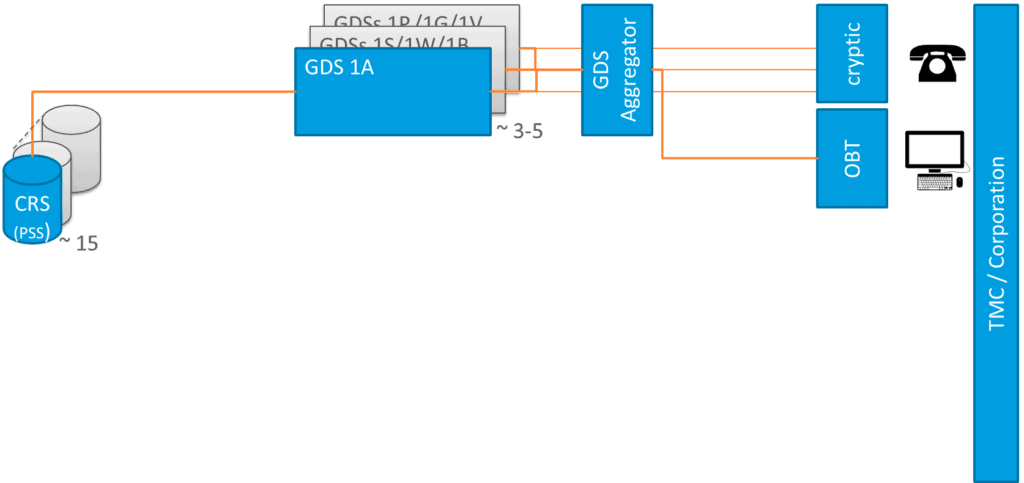
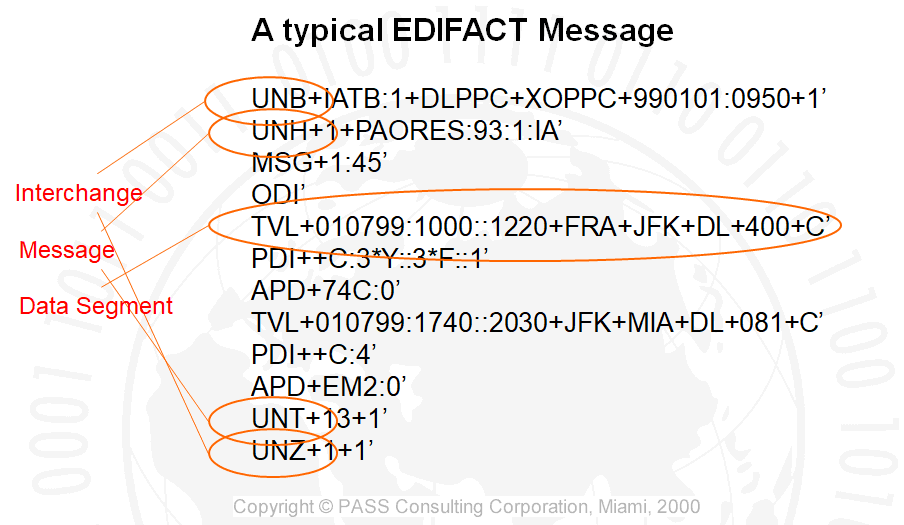
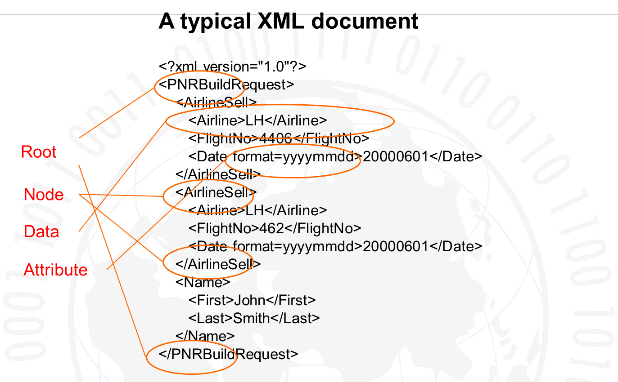
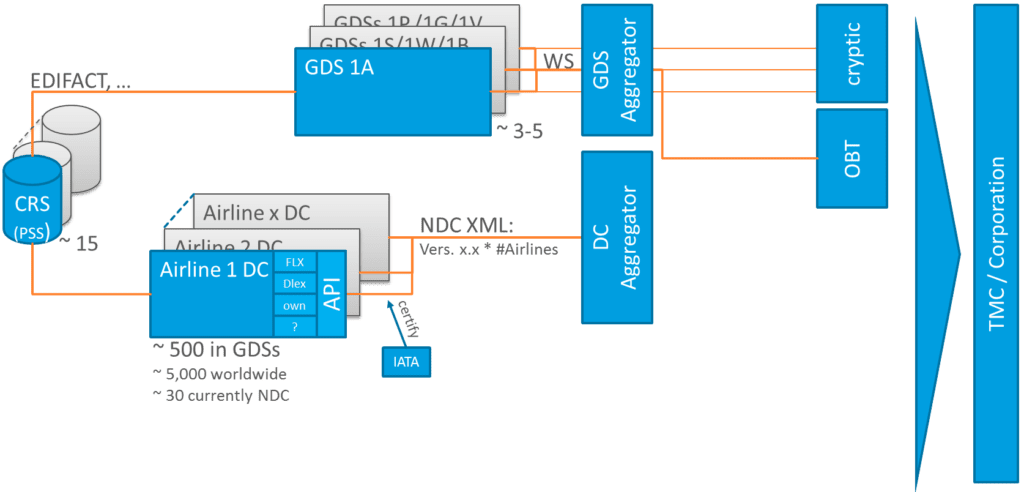
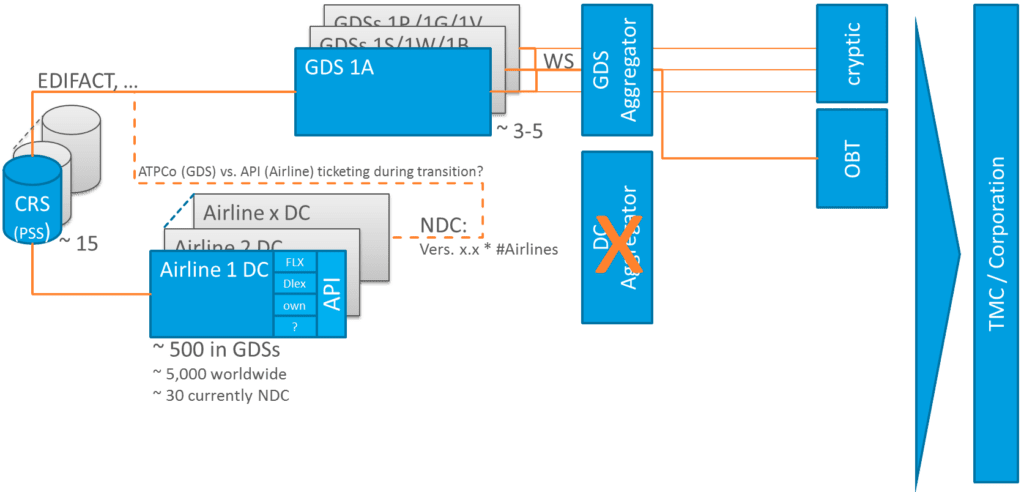
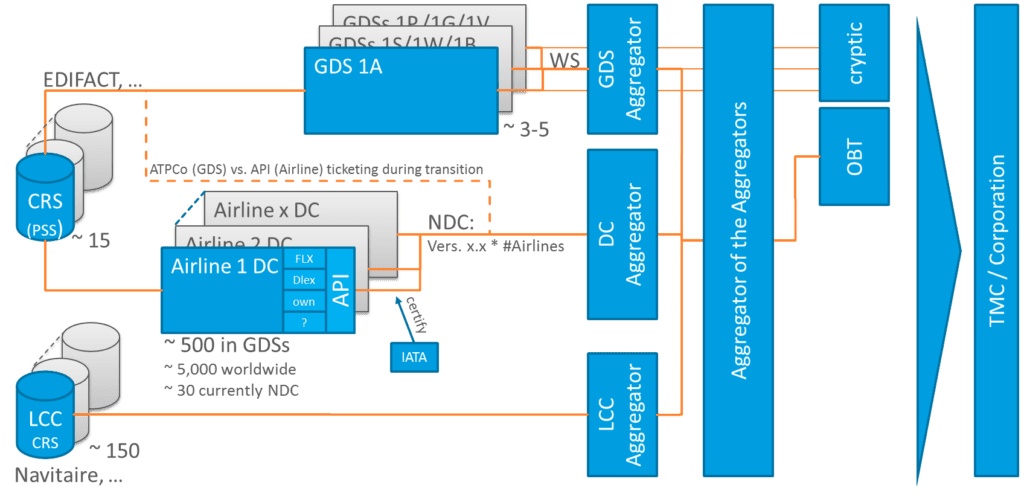
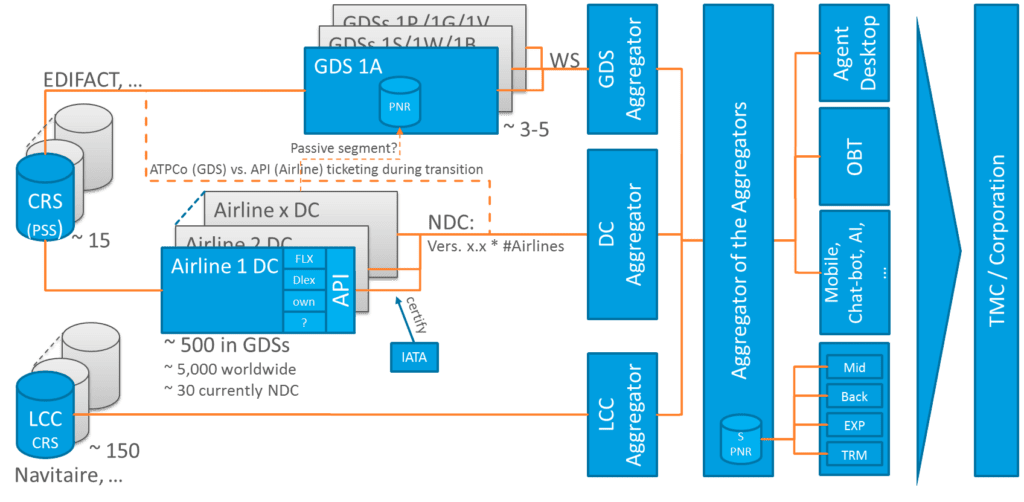
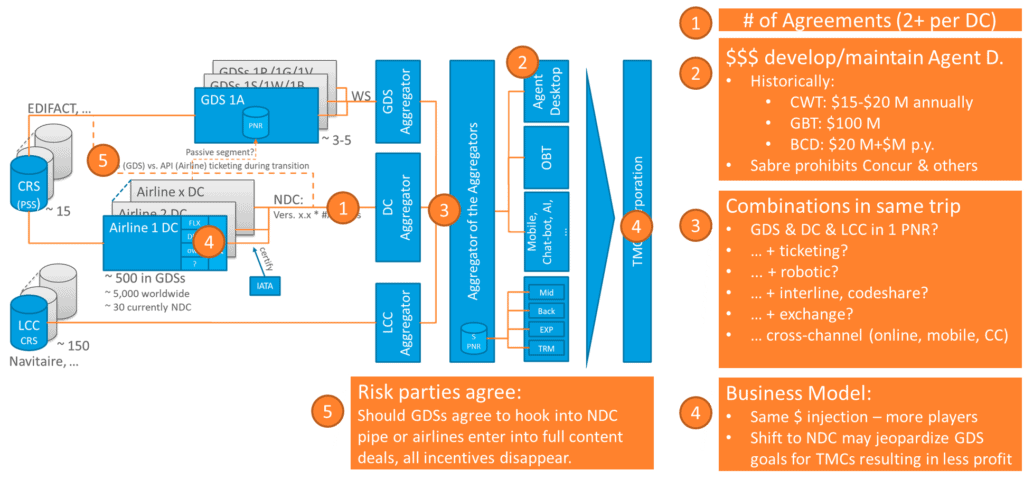
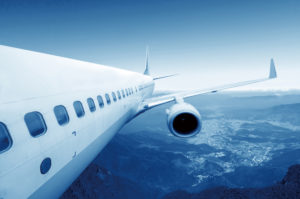


This Post Has 29 Comments
Hi there,
Thank you for your well-written comment! I agree with most of your points. Coincidentally, I wrote a follow-up blog, which was just published around the same time you wrote your comment. You will find many of my new thoughts there: https://www.travel-industry-blog.com/travel-industry/ndc-gds-onboard/. In response to your question: indeed, there won’t be aggregators integrating up to 500 airlines – maybe the GDSs will fulfill that goal one day, but nobody else can do this. As you mention, in my eyes there will be a couple of direct connects for their core service of the company in question. Will it be handled by aggregator or TMCs/corporations directly? It depends. We get a lot of requests lately to integrate some of those direct connects as well as to use an aggregator such as Travelfusion, who we have integrated upon such request. Every entity has to decide for themselves whether to make or buy. A big concern, at least for me, is still, that NDC is not a standard yet (as I described in my above-mentioned follow-up blog). Hence, I’m hesitant to integrate something today, which I have to change later. Airlines ‘interpretation’ of NDC as well as the different workflow of NDC (offer is created by airline and not GDS) in conjunction with the existing traditional legacy carrier workflow of a GDS poses challenges. In addition, the use of a heavily loaded air shopping message, while at the same time technology in general is moving towards microservices, is another problem for technology provider to be sure their investment is safe. Since the GDSs are on board with NDC now, what are they going to do? Change their traditional workflow/messages for their non-NDC airlines as well? I don’t want to jump the gun and create something which later has to be changed again. Forcing a ‘real’ standard as well as defining a roadmap how traditional offer creation along with modern NDC offer creation will be handled is eminent now. Who is going to translate heavily loaded XML messages into small micro messages, which are needed for any type of REST API? We have the capability and are thinking of creating a roadmap in that regard with our iXX1 product (www.iXX1.travel), but we are also careful about the direction depending on where the big guys are heading.
Happy holidays,
Michael
[…] October 2017, I wrote a blog about the technical and commercial challenges of NDC. The title was “The reality behind NDC: Why NDC won’t break down the GDS oligopoly – yet”; A year later, I guess one can say for sure that the last word “yet” of the title can be […]
Thank you very much for the interesting and educative article. I’ve been working for an airline, a PSS provider and a GDS so the whole NDC thing and the technical, commercial and organisational challenges airlines are facing interest me a lot.
I think major GDSs have failed to listen to airlines’ needs. Money comes from airlines’ pocket, not from travel agencies. GDSs have been in such a comfortable situation, making large profit while airlines have been struggling and airlines see it unfair. So NDC came in the picture – ‘direct connection’, ‘no booking fee’ sound sweet, but airlines were not aware of the full work done by GDSs. Firstly the number of transactions absorbed by GDSs, and PNR – it seems NDC bookings do not have a form of PNR but most airline IT applications have been built based on PNR data. So how the current airline system would cope with the increased transaction (huge – my biggest concern) and no-PNR bookings? PSS providers are working on it, they have no choice, but who should pay for such changes? Secondly the global workforce of GDSs supporting TAs – I remember one OTA in Asia struggling implementing LH NDC – LH sales staff in that country had no idea what NDC was. They had to talk to LH staffs in Germany and language was a big issue. Lastly, travel agencies would prefer staying in GDS model at least for financial reason, they are not getting paid by making NDC bookings, not yet. And there’s a cost involved for TAs adopting the NDC way – again why travel agencies have to pay for it? A big part of the money saved by bypassing GDSs needs to be spent covering such areas, but airlines do not seem to have clear idea on the ‘cost of NDC’ yet, and PSS providers and travel agencies are paying for it – airline should be responsible for such change.
Still I see a good hope for NDC. I’ve been working with large OTAs and consolidators and many of them are using “Direct API” with LCCs. They are technically capable, they prefer doing it directly rather than using LCC aggregators such as Travelfusion. For them aggregating multi-GDS contents + Direct API contents on their own is nothing new and it is not difficult to do so. I was thinking the same thing can be applied for NDC and legacy airlines – It is painful if the OTAs should adapt different flow per airlines as you mentioned but if they are willing to do it (they see it as a differentiation point, and in developing countries tech labour does not cost much), it would be a good thing for NDC adoption. (Well if the airlines have resources to support OTAs is a different story). What is your opinion on this part? Is aggregator really necessary? You mentioned that “For each TMC to integrate 500 airlines directly through NDC won’t work.” and I do agree, but what if 10 TOP selling airlines with NDC + other airlines with GDS? If each airlines focus on their top selling TAs, and each TAs focus on their top selling airlines, that will be already significant change in the market. Airlines should stay proactive on this part – they should reach out to their TAs, supporting the implementation technically and financially if possible. And ideally airlines themselves should find a creative way to sell their tickets or ‘offers’ using NDC. Technology is already there, but airlines seem to be a bit lost – maybe I’m wrong.
Announced today: Sabre Corporation acquiring Farelogix for $360M. Foes become friends?! Any thoughts what this means for NDC? Pls. comment!
https://www.sabre.com/insights/releases/sabre-enters-agreement-to-acquire-farelogix-expanding-its-airline-technology-portfolio-and-accelerating-its-strategy-to-deliver-next-generation-retailing-distribution-and-fulfillment-capabilities/
Well said! Thank you for sharing your thoughts!
Michael
More versions, more hackathons, more announcements won’t redressed an absence of clearly defined goals for NDC and timescales in which they will be achieved.
Dear Roland,
I cannot agree more!!
That’s also the reason why we haven’t gone full blown into becoming the NDC aggregator. We have Lufthansa (one of our home markets) and actively generate NDC booking directly with Lufthansa. We carefully investigate any additional connections we create ourselves – especially since we know how hard it is, making even that one connector work (especially for the business environment). Don’t ask me about the man days (years?) we spent on this one single adapter.
We have an ongoing dialogue with our clients what is needed. We have Travelfusion integrated as an alternative (that’s another tough adapter, with numerous complications, I would not recommend anybody to create themselves – again, especially when it is for business travel).
In summary, we as an industry are definitely keeping ourselves busy with self-made problems.
Thanks,
Michael
Because there are 18 different versions of NDC and each airline or system provider implementing these 18 versions differently, we can’t talk about a standard as it doesn’t make life for those trying to consume the XML schemas easy. In fact, there might be higher cost than using the traditional channels. Aggregators want to make money as well – and add more complexity. In order to proceed we need to have IATA publishing clear guidelines, documentation, tutorials and examples how NDC schemas should be used – besides making sure that any new version provides backward compatibility. Makes adoption easier and for those using the schemas it will mean that once they can talk to 1 airline, it will work with most others. This worked for EDIFACT and I can’t understand why proper standardization wasn’t done for NDC schemas right from the beginning.
Dear Fraser,
Thanks for this additional input. Indeed, there is constant change on this subject, and it seems like, with a little delay, the GDSs are jumping on the boat. Hence, the option which I kind of mentioned only briefly above (GDSs take on the task of NDC aggregation) became more and more viable. Now that the GDSs are further along with their technology, NDC seems to be used as something which it was originally intended for – a newer and better standard: replacing a several decades old EDIFACT standard, by a ‘newer’ (meanwhile also already 18 years old) XML schema. This provides airlines with new ways to present, distribute and sell their inventory. It will still be challenging, how aggregation of such a flexible content will be handled – just compare my example above with Lufthansa’s brewery tours. However, once the technical aspects are figured out and developed the remaining piece is to figure out the commercial terms, highlighted at the end of my article. As fare as the TMCs are concerned, they would like to continue getting commissions & overrides (https://www.travel-industry-blog.com/travel-technology/travel-technology-for-dummies-what-are-incentives-commission-overrides/) from GDSs but understand that the commercial model will change – and non of them want to be left out. It remains to be seen which amounts flow through which channels – but again this is more or less only a commercial question negotiated on top of a technical term.
We, as well, took a wait-and-see approach. We have developed (and are certified for) a direct connect to Lufthansa (one of our home markets), hence we know what it takes to create a direct connect via NDC. This provides us the possibility to react within weeks should direct connects all of a sudden pick off. However, we still believe GDSs may be in the best position to become ‘the’ aggregator in order to avoid numerous redundant interfaces. It never gets boring until the market just passes us.
Pls. feel free to start a fruitful discussion on this topic.
BTW: I will be moderating a panel on Nov. 27th 2018 in Berlin about “How will airline distribution models evolve as the NDC standard and direct connect channels become commonplace” (https://was18.capaevents.com/page/1309176/agenda).
Thanks,
Michael
Hi Michael
Thank you for this incredibly insightful & comprehensive overview to the NDC landscape, I’d advocate that this should be a must read for anyone who is currently wrestling with the future of this disrupter in travel. Here in the UK there has been some notable announcements since the last post above, in June.
In the past 2 weeks Amadeus have announced that Amex, CWT & BCD have also joined FCM and entered their NDC-X program.
I’d be interested to learn what you make of this?
Many thanks
Fraser
Dear Chris,
Thank you for your kind words! I really appreciate it.
I do believe, NDC is here to stay from a technical perspective which I just mentioned in my response to the other question posed last night (more flexible than EDIFACT for instance). Indeed, the uptake is not high, and the reasons are mentioned in this blogpost. NDC is just not thought-through and not everybody is pulling in the same direction. GDSs want to preserve the Status-Quo and charge for inventory (CRS – https://www.travel-industry-blog.com/travel-technology/pss/) and distribution (GDS – https://www.travel-industry-blog.com/gds/the-difference-between-crs-and-gds-in-the-travel-industry/). GDSs want full content deals (https://www.travel-industry-blog.com/travel-technology/travel-technology-for-dummies-what-is-full-content/) and TMCs have put all their eggs into the GDS baskets (https://www.travel-industry-blog.com/gds/american-sabre-trial-airline-gds-tmc-corporation-no-winner-only-losers/) and still receive a significant kickback (https://www.travel-industry-blog.com/travel-technology/travel-technology-for-dummies-what-are-incentives-commission-overrides/) – plus there is a significant integration cost and one has to maintain several interfaces as I mentioned in this blogpost. The largest TMCs have meanwhile introduced fees if a booking is created around the GDSs since there is an extra cost to service such bookings in the backend (two of the top three TMCs use our XX1 to access GDSs). You also need a Super-PNR and all backoffice provider need to integrate with such Super-PNR. Some GDSs prohibit the creation of passive segments unless they are an approved supplier (which NDC carrier are not). So, plenty of hurdles and for now, I only see the possibility GDSs integrating NDC themselves which will proceed at the pace the GDSs drive development. The big question is, how will the business model change, as obviously there won’t be a kickback in NDC and now airlines have invited another player (their NDC provider, like Farelogix) who gets a piece of the cake. In my recollection the commercial model just simply doesn’t add up. For each TMC to integrate 500 airlines directly through NDC won’t work. For us as an aggregator, I already got a lot greyer hair by just integrating NDC to some extent. The fun part is that even though you have certification all this level 3 certification which sounds great, no one size fits all – there are too many optional areas.
Thank you,
Michael
Dear Prince,
I believe you are pretty close, but obviously everybody has to draw their own conclusions. With regards to incorporating Navitaire, I believe you mean incorporating the CRS (https://www.travel-industry-blog.com/travel-technology/pss/) into their GDS offering – correct (https://www.travel-industry-blog.com/gds/the-difference-between-crs-and-gds-in-the-travel-industry/)? Navitaire is a CRS for low cost carriers (LCCs) and owned by Amadeus (which also makes sense to incorporate Altea – their CRS, Navitaire – their LCC CRS and another company they own: Pyton, for other LCCs into their offering. Right now, it’s double dipping for airlines to charge them for distribution (GDS) and, for airlines they host, for inventory management (CRS) – which for now is more beneficial since you can charge twice. But definitely they will rather cannibalize themselves than giving business away to others – compare https://www.linkedin.com/pulse/siemens-uses-amadeus-cytric-hook-altea-bypassing-gds-save-strauss/. With regards to NDC: it offers more flexibility than EDIFACT, so at some point it will play out its original benefits and yes, the GDSs will have to integrate it – the question is at what price and whether there is a kickback (https://www.travel-industry-blog.com/travel-technology/travel-technology-for-dummies-what-are-incentives-commission-overrides/). It’s all about the timing and to maximize profits.
Thank you,
Michael